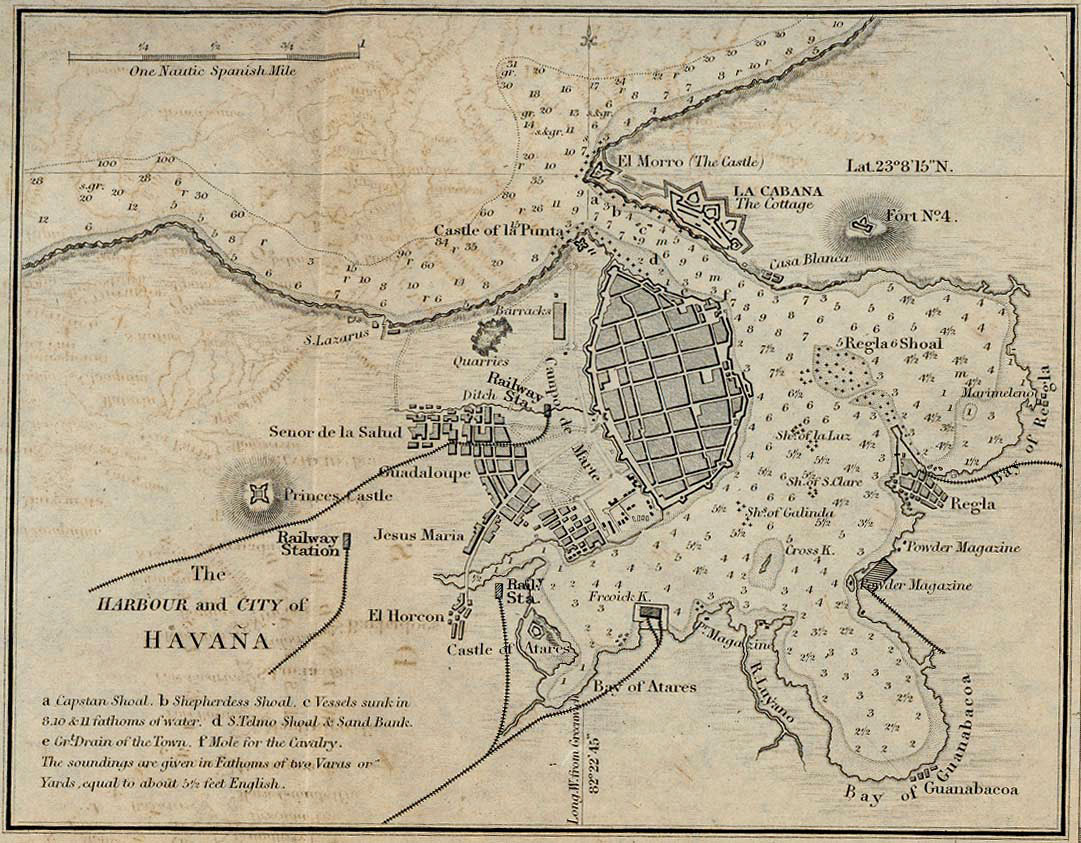Ap. 4th
Made the Western Islands.
From the journal of the Privateer Armed Schooner Lawrence, April 4, 1814. Maryland Historical Magazine, Volume 3, Number 2, June 1908, p. 171-176.
Ap. 4th
Made the Western Islands.
From the journal of the Privateer Armed Schooner Lawrence, April 4, 1814. Maryland Historical Magazine, Volume 3, Number 2, June 1908, p. 171-176.
April 2.
Latt 39° 28′, Long 39° 37′ W. Spoke a Sweedish Brig from Amelia Island to Gothenburgh, Cargo Cotton.
From the journal of the Privateer Armed Schooner Lawrence, April 2, 1814. Maryland Historical Magazine, Volume 3, Number 2, June 1908, p. 171-176.
March 23rd
Latitude 28, 22. Longitude 53, 55, captured the British schooner Lark from Halifax to Barbadoes, ordered in.
From the journal of the Chasseur, excerpted in Baltimore American, June 2, 1814. Maryland Historical Society.
On March 22, 1814, the Mammoth set sail for Havana on a maiden voyage with commander Samuel Franklin and a large crew of 100 seamen. Built by Thomas Kemp in 1813 for $40,000, the Mammoth was the largest privateer schooner built in Baltimore at the time, weighing 376 tons and measuring 112′ by 28’3″ by 13’4″. When ship was commissioned on March 7, the ship’s owners included John Gooding, Samuel Smith, James Williams, and James A. Buchanan.
With special thanks to volunteer Dennis Lilly and the Maryland Historical Society, we are excited to follow the first two voyages of the Mammoth from March through late October. The ship’s log acquired by the Maryland Historical Society in 2009 is likely a period copy of the original as the pages are clearly written and there are no water stains or other evidence of hard use from a long sea voyage.
Over the next few months, you can stay tuned for more daily updates on the lives of the Baltimore seamen on board the Mammoth but if you don’t mind the spoilers we have a quick preview of the events that lie ahead for this schooner.
Armed with 10 cannons, the Mammoth sailed to Havana where she unloaded her cargo then cruised the Caribbean, teaming up with two other privateers, to burn and harass the substantial English trade. In late spring, the Mammoth sailed north and put into Portsmouth on May 27 and stayed until June 23, 1814. The Mammoth’s second cruise began with a foray of burning English fishing vessels off the Grand Banks, where her attack on an armed English brig (probably the Sinclair) was repulsed. On October 10, 1814 she engaged in a long cannonade against an English transport, the Champion, which resulted in her capture. Mammoth transferred her cargo, and then returned the shot-up vessel to her commander. Franklin then sailed the Mammoth to Ireland, where she cruised, burning a number of captured vessels. She arrived back in Portland on November 15, 1814.
This post is adapted from the Maryland Historical Society Finding aid to The Schooner Mammoth Logs, 1814 and The Schooner Independencia del Sud, November, 1817 – January, 1822 MS 3082.

On March 19, 1814, Captain Thomas Boyle and the Comet arrived at Beaufort, North Carolina where he ended his third and final cruise as the ship’s commander.
Excerpts from Boyle’s log were published in the Baltimore Patriot where he gave an account detailing their voyage from their escape from the Chesapeake Bay in October to the ship’s battle with the Hibernia in January to the “large man of war brig” that gave chase on March 5 before his ship “out sailed her with ease.” Boyle concluded the with satisfaction, writing:
On the 19th, arrived at this place after a cruize of 5 months, and being chased during that time thirty four times, by frigates and men-of war brigs, but always out sailed them.
March 19th
Latitude 2, 8, Longitude 61, 45, boarded the Spanish brig Salvador, from St. Johns, Porto Rico, to Vigo, who informed us, that the Comet, Captain Boyle, sailed from St. Johns about the 26th February. At 4 P.M. parted company with the Kemp.
From the journal of the Chasseur, excerpted in Baltimore American, June 2, 1814. Maryland Historical Society.
March 18th.
Latt 35° 27′ N., Long 67° 11′ W. Spoke a Prussian Ship from Boston to the Havanna in ballast out 6 days.
From the journal of the Privateer Armed Schooner Lawrence, March 18, 1814. Maryland Historical Magazine, Volume 3, Number 2, June 1908, p. 171-176.
March 16th.
Latt 34° 35′ N, Long 69° 40′ W. Was chased four hours by a Frigate. Run her hull down in that time.
From the journal of the Privateer Armed Schooner Lawrence, March 16, 1814. Maryland Historical Magazine, Volume 3, Number 2, June 1908, p. 171-176.
March 15th.
Latt 34° 52′ N, Long 69° 52′ W. Spoke a Spanish Brig from the Havanna for New Port with American Prisoners on board put there by an English Frigate.
From the journal of the Privateer Armed Schooner Lawrence, March 15, 1814. Maryland Historical Magazine, Volume 3, Number 2, June 1908, p. 171-176.
March 13th.
At 11 PM passed the English Fleet at Anchor in Lynhaven Bay.
From the journal of the Privateer Armed Schooner Lawrence, March 13, 1814. Maryland Historical Magazine, Volume 3, Number 2, June 1908, p. 171-176.